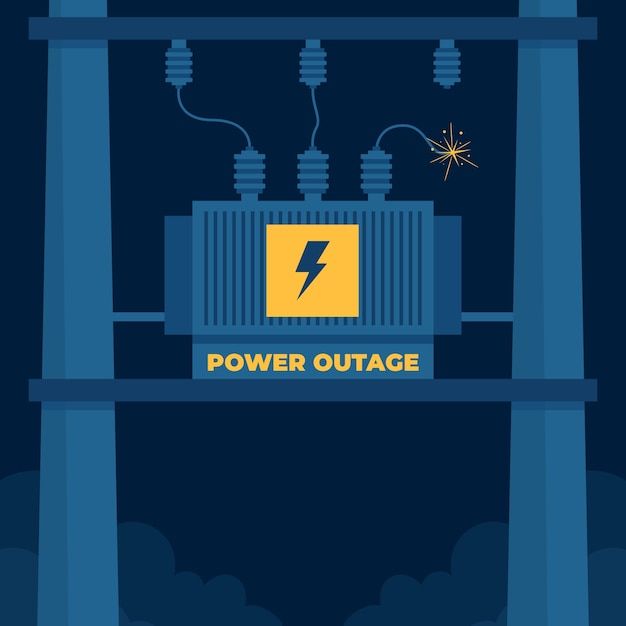“Server #17 just dropped offline.”
“Trigger the backup. Initiate failover protocol. Route through AP-1 node.”
“DNS propagation confirmed. We’re back in under 20 seconds.”

Welcome to Nest Nepal’s Uptime War Room: the nerve center of operations where uptime isn’t just a metric; it’s a mission.

When your business depends on staying online, from e-commerce sales to lead-gen landing pages, even 5 minutes of downtime can mean lost revenue and shattered trust. So what happens when disasters like outages strike? What happens when a DDoS attack is detected at 2:13 AM, or the national grid cuts out power for half the valley?
Here’s how Nest Nepal fights to keep your websites online, even in the worst-case scenarios.
Chapter 1: The Invisible Threats to Uptime

Before we dive into the action, let’s explore the kinds of outages and threats we routinely prepare for:
- Power Grid Failures – Nepal’s electrical grid isn’t always stable, especially during monsoon or dry season loads.
- Upstream Downtime – If the data center’s internet provider has routing issues or network collapse, every site hosted could go dark.
- DDoS Attacks – Distributed Denial-of-Service attacks are becoming increasingly common, especially during political unrest or peak traffic periods.
- Hardware Failures – Disks die. CPUs overheat. RAID controllers fail. Even with the best equipment, physical components can go wrong.
- Human Error – Misconfigured DNS, a single mistaken keystroke, or rogue plugin update could tank hundreds of sites.
Each of these potential failures has one thing in common: without preparation, they can bring everything crashing down. That’s where our war room steps in.
Chapter 2: Building the Redundant Fortress – Our Infrastructure
Nest Nepal doesn’t just rely on one datacenter or one strategy. Instead, we’ve layered our infrastructure for resilience.
1. Anycast DNS Routing
Our DNS servers are globally distributed using Anycast, which means:
- Users are routed to the nearest available DNS server.
- If one location faces a network failure, others take over automatically.
- Reduced DNS resolution latency globally.
2. Tiered Data Centers with Failover
We use tiered failover clusters, when one node or location goes down, traffic is routed to the next available node in a different city (or even country) without downtime.
3. Smart Load Balancing
- Round Robin + Health Check: Requests are evenly distributed until a node fails health checks.
- Failover Priority Tiers: Tier-1 servers (NVMe powered, low latency) handle primary loads; Tier-2 (slightly slower but resilient) step in during spikes or outages.
- Auto-healing: Failed containers or VPS nodes are redeployed in real-time.
4. Multi-Layered Security Stack
- Real-time DDoS mitigation from upstream (Cloudflare + in-house filters).
- WAF rules (Web Application Firewall) are updated daily.
- Login attempt monitoring, brute-force prevention, and auto-IP ban.
Chapter 3: When Crisis Hits – Real Case Dramatizations
⚠️ Case 1: Nationwide Power Cut – July 2024
6:01 PM – Sudden national blackout reported.
UPS batteries online. Diesel generators kick in at the datacenter.
What saved us?
- Uninterruptible Power Supplies (UPS) with a 10 10-minute buffer.
- Diesel failover generators are tested weekly.
- Priority Load Cluster: Non-critical staging servers are temporarily suspended to conserve energy for live traffic.
Result:
100% uptime maintained. Users never knew.
Case 2: DDoS Storm on Local News Website – October 2024
1:46 AM – 20 Gbps DDoS attack detected.
Server #23 hit by 100K fake IP requests per second.
Response:
- Traffic black-holed at the edge, using upstream DDoS protection.
- Dynamic WAF Rules Deployed: traffic blocked from blacklisted subnets in real-time.
- Cloudflare’s “I’m under attack” mode is enabled temporarily.
- Backend resources were isolated from frontend proxies.
Uptime Impact:
All users are routed through an alternate proxy. No site crash. Logged and blocked within 7 minutes.
Chapter 4: Our War Room in Action – 24/7 Monitoring Workflow
Nest Nepal’s NOC (Network Operations Center) doesn’t sleep.
- 📈 Real-time Monitoring Dashboards: From CPU usage to traffic heatmaps, everything is visualized in Grafana.
- 🔔 Instant Alerts via Slack & PagerDuty: If a node crosses 70% CPU or 10-second response delay, our ops team gets pinged.
- 👩💻 Human Response Time: <2 minutes average reaction time at all hours.
- 🤖 Self-Healing Scripts: Auto-restart crashed services, reroute DNS, or redeploy backups before human intervention.
Chapter 5: The Disaster Playbook – What If Everything Fails?
Even if a catastrophic event hits, a datacenter burns down, or the whole backbone ISP dies, here’s how we’re covered.
Backup Strategy
- Daily Snapshots are stored across multiple cloud zones.
- Weekly cold backups on isolated servers in a separate country.
- Backups are encrypted, version-controlled, and tested weekly.
Global CDN & Reverse Proxy Support
Sites using Nest Nepal’s advanced plans are served via CDN layers:
- Cached content lives on 30+ global edge nodes.
- Visitors still access your site even if the main server is temporarily unreachable.
- Dynamic fallback routing resyncs origin servers once stable.
Chapter 6: Why It All Matters (The Cost of Downtime)
Let’s break it down.
| Business Type | Cost of 1 Hour Downtime | Brand Impact |
| eCommerce Store | NPR 50,000 – 500,000+ | Severe |
| Lead Gen Website | Lost conversions | Medium |
| News or Media | Trust erosion, ad loss | Severe |
| Portfolio Site | Low | Low |
Nest Nepal’s uptime strategy isn’t just about tech; it’s about protecting your business reputation and user trust.
Final Thoughts: It’s Not Magic. It’s Engineering.
Uptime isn’t guaranteed; it’s earned with strategy, investment, and vigilance.
At Nest Nepal, we don’t just wait for issues. We simulate them. We prepare for them. We train for the worst so you get the best.
So next time you load your site and it just works, even during a blackout or a cyberattack, remember, somewhere deep in the Uptime War Room, the lights are on, the alerts are pinging, and someone’s always watching.